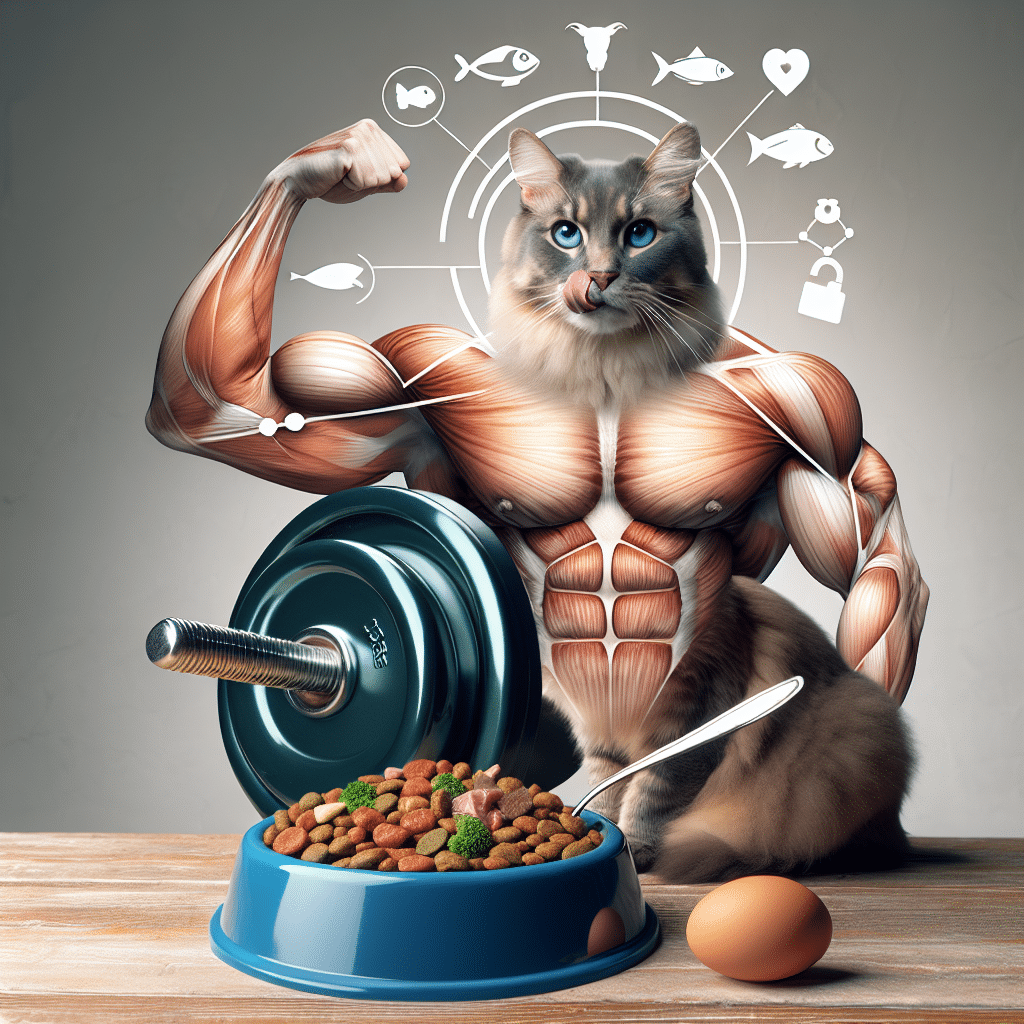Understanding High Protein Cat Food for Muscle Growth
When it comes to ensuring cats maintain a healthy weight and muscle mass, high protein cat food plays a critical role. Cats are obligate carnivores, which means their diet should naturally consist of animal-based proteins that are essential for their overall health and muscle growth. Selecting high-quality, protein-rich food can be a game-changer for muscle development in felines.
The Importance of Protein in a Cat’s Diet
Types of Protein
Protein is made up of amino acids, which are the building blocks of muscle tissue. Cats require a balance of essential amino acids like taurine, arginine, and methionine, primarily found in animal products. A diet rich in these proteins supports:
- Muscle Repair: High protein helps repair tissues after physical activity.
- Energy Production: Protein is a key energy source, especially when carbohydrates are low.
- Immune Function: Proteins contribute to immune health, keeping cats active and healthy.
Recommended Protein Content
For optimal muscle growth and energy levels, the protein content in cat food should ideally range from 30% to 50%. Look for brands that meet the Association of American Feed Control Officials (AAFCO) standards, ensuring nutritional adequacy.
Key Ingredients to Look For
Animal-Based Proteins
High-quality cat foods will list specific animal proteins as the primary ingredient. Common sources include:
- Chicken: A lean source rich in essential amino acids.
- Fish: Provides omega-3 fatty acids, promoting healthy coat and skin.
- Turkey: Another lean protein that offers a great amino acid profile.
- Lamb and Beef: Offer good protein content with high palatability.
Meat Meals
Meat meals, like chicken meal or fish meal, contain concentrated protein and nutrients with moisture removed. This results in higher protein density, making them excellent for muscle growth.
Additional Nutritional Considerations
Fats
Healthy fats should also be a part of a high-protein diet. They provide essential fatty acids that support coat health and provide energy. Look for:
- Omega-3 and Omega-6 Fatty Acids: Found in fish oil and flaxseed.
- Animal Fats: Sources like chicken fat can enhance palatability.
Carbohydrates
While cats require fewer carbohydrates than dogs or humans, a small amount can be beneficial for digestion. Look for whole grains, fruits, and vegetables that provide fiber without a high glycemic load.
Special Formulas for Kits and Active Cats
Kitten Formulas
Kittens need a higher protein content—around 35% to 50%—to support rapid growth and development. Choose formulas specifically designed for kittens that meet this protein requirement.
Performance Diets
For active or working cats, consider performance diets, which are formulated with higher protein and calorie content. This supports their energy needs during intense activities.
Best High Protein Cat Food Brands
1. Wellness CORE Grain-Free
This brand features real meat as the first ingredient, offering high protein content (approximately 38%). It’s grain-free, making it easy on the digestive system while promoting muscle growth.
2. Blue Buffalo Wilderness
With a protein content of 34%, this formula contains deboned chicken and fish meal. It’s loaded with antioxidants and omega fatty acids for full-body health.
3. Orijen Cat & Kitten
Orijen stands out for its 40% protein content, sourced from free-run chicken, wild-caught fish, and a variety of fresh fruits and vegetables.
4. Instinct Raw Boost Mixers
This unique formulation features high protein kibble mixed with freeze-dried raw meat, providing a nutritious boost to any meal. It boasts around 38% protein and is ideal for muscle development.
5. Nutro Ultra Grain-Free
With 35% protein and a mix of animal proteins and plant ingredients, Nutro Ultra promotes muscle mass while supporting a healthy immune system.
How to Transition to High-Protein Cat Food
Transitioning your cat to high-protein food should be gradual to avoid digestive upset. Follow these steps:
- Start Slowly: Mix a small amount of new food with their current food (about 25% new and 75% old).
- Gradually Increase: Over 7-10 days, slowly increase the ratio of the new food until the old food is fully replaced.
- Monitor Behavior: Keep an eye out for any changes in appetite, stool consistency, or energy levels.
Signs of a High-Quality Diet
Assess your cat’s health to evaluate the effectiveness of their high-protein diet. Key indicators include:
- Healthy Coat: A shiny, smooth coat usually indicates good nutrition.
- Moderate Activity Levels: Regular play and activity suggest that they are receiving enough energy from their diet.
- Ideal Weight: Maintaining a healthy weight is crucial for muscle growth and longevity.
Addressing Concerns and Questions
It’s common to have questions regarding high-protein diets. Here are some FAQs:
Is a High Protein Diet Safe for Cats?
Yes, as cats are naturally carnivorous. However, always consult your veterinarian when changing their diet.
Can Too Much Protein Harm My Cat?
Excess protein is generally safe, but individual health conditions may affect this. Always work with a vet if your cat has pre-existing health issues.
How Often Should I Feed High Protein Food?
Cats typically thrive on multiple meals throughout the day. Aim for at least two meals for optimal digestion and muscle maintenance.
Conclusion
High-protein cat food is essential for muscle growth and overall health. By choosing the right ingredients and brands, you can provide your cat with the food they need to thrive. Understanding their dietary needs, transitioning them gradually, and monitoring their health will ensure a successful shift to a high-protein diet, keeping your feline friend playful and healthy for years to come.
